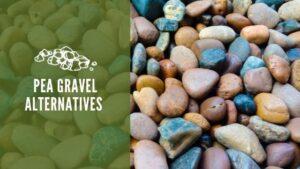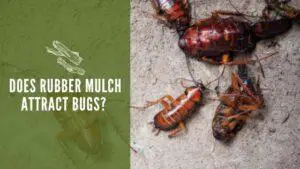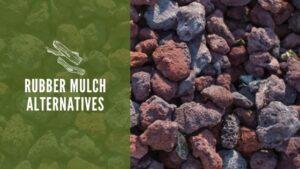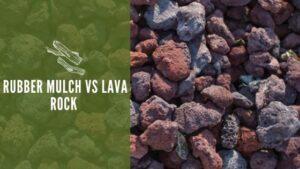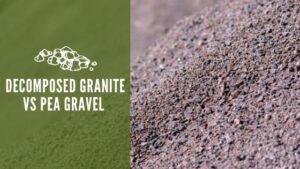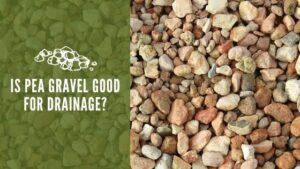Pea Gravel vs Rubber Mulch
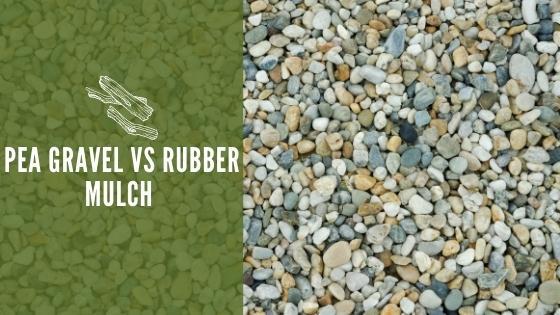
Choosing the right mulch for your landscape or playground area is an important decision for many reasons. If you do not want to use wood mulch and would like a more permanent solution, rubber mulch and pea gravel are popular choices. Let’s explore which one might be best for you.
Is Rubber Mulch Cheaper than Pea Gravel?
Pea gravel is considered a low-cost option. You can expect pea gravel cost to be around $30-50 per ton, but what does that mean in terms of surface area? A three-inch depth is considered the optimum for landscaping. It will cost about $1,000-$1,666 for a 2,500 square foot area at this depth.
Recycled rubber mulch is about $8-$14 per cubic foot. A 2,500 square foot landscape area would take about 520 cubic feet at a depth of 3-inches. This would be a total cost of about $4,160 for the same area. Rubber mulch is more expensive, but you do not have to top it up as it wears down.
Rubber Mulch Pros and Cons
Rubber mulch is more expensive initially, but it can last about ten years without being topped up. Many consider rubber mulch environmentally friendly because it keeps tires from ending up in landfills. While this is true, it is not entirely environmentally friendly.
Many prefer rubber mulch because it is long-lasting and doesn’t attract many bugs, but it does break down over time, especially when exposed to sunlight. As it decomposes, it leaches chemicals into the soil or water. These toxic substances include heavy metals, which are dangerous to plants, animals, soils, and nearby aquatic environments.
Many rubber mulch producers put a coating on the mulch to prevent exposure to toxins for playground use, but there is concern over the coating itself. If reducing toxins in and around your home is important to you, then rubber mulch might not be the best option. The pros and cons of rubber mulch depend on what is more important to you.
Pea Gravel Pros and Cons
Pea gravel is the least expensive alternative initially, but you will need to top it up and do some maintenance. Pea gravel is the most bio-friendly alternative for landscaping. It is especially sustainable if you purchase it from local sources. Unlike wood mulch, it does not damage the hardwood forests, and it is plentiful.
One of the advantages is that it creates better drainage than rubber mulch. Pea gravel has a more natural appearance for garden paths and weed control in beds. While you do not have to renew it often, you might need to top it up about every four or five years.
Pea gravel is an excellent choice for areas that do not get a lot of wear due to people walking on it.
Which Is Better Rubber Mulch or Pea Gravel?
Both rubber mulch and pea gravel have advantages and disadvantages. Pea gravel consists of smooth, round stones that have been graded to be a consistent shape and size. They are about the size of a pea. Unlike other gravel, the size and shape of the stones prevent it from compacting, as with other gravels designed to compact. Pea gravel is obtained as a part of other gravel and mining processes.
Rubber mulch is a recycled material that is made from old tires. They are cleaned and ground to a consistent size. Any wires or other materials are removed. Rubber mulch is popular for playgrounds because it provides a soft surface. Rubber is a long-lasting material, and that is why it is important to keep it out of landfills.
Pea gravel has several benefits in the landscape that rubber mulch does not. For one, it creates better water drainage. It also prevents weed growth and does not decompose over time. It will need to be refilled every four years because it tends to wear down and create sand. This sand can create a hard surface underneath the top layer that will have to be removed from time to time.
Both rubber mulch and pea gravel have advantages and disadvantages. Although rubber mulch lasts longer, it does create some concerns over toxins as it breaks down. Pea gravel is the more environmentally-friendly choice, and it is better for plants. Which one you choose depends on your landscaping goals.

